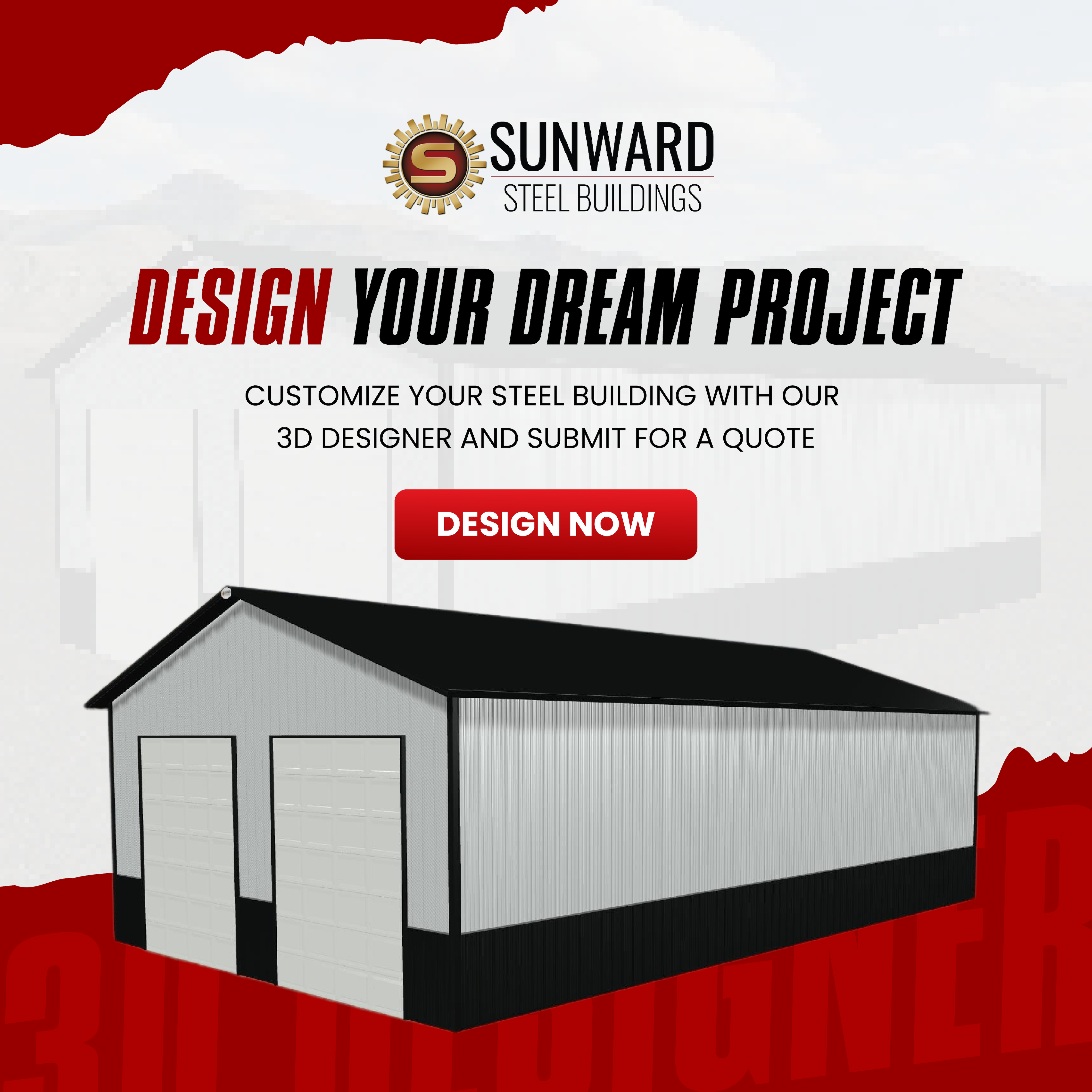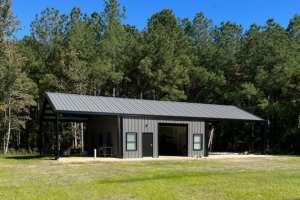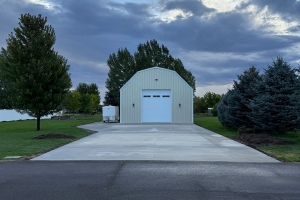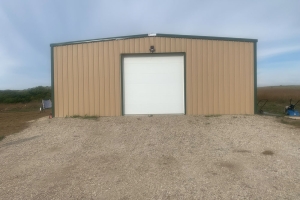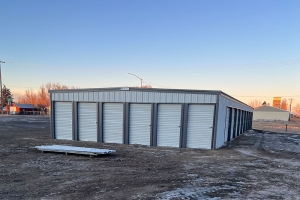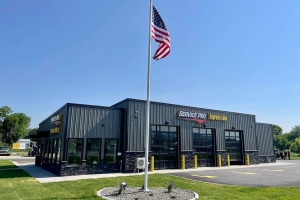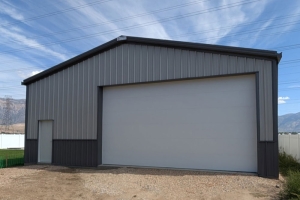How Steel Structures Qualify For Green Building Certifications
October 4, 2025 | Green Buildings
Green building certifications matter more than ever. They show that your building meets high environmental standards, supports energy efficiency, and reduces waste—features that are increasingly important to buyers, tenants, and regulators alike.
If you’re planning a steel building project, you may be surprised to learn how well these structures can support green goals. The following article covers how steel buildings—like the ones we’ve proudly manufactured at Sunward Steel since 1972—can help you earn key green building certifications.
The Increased Use Of Steel In Sustainable Construction
With the shift toward greener construction practices, steel has quickly become a go-to material for eco-conscious builders. As sustainability targets become increasingly stringent across both public and private sectors, demand is rising for materials that are strong, adaptable, and environmentally responsible. Steel fits that need—earning its place in modern sustainable design.
One key reason for steel’s rising popularity is its compatibility with modular and prefabricated construction. These methods reduce construction time, improve safety, and minimize on-site waste—essential factors for any green project. Steel’s consistency and precision make it an ideal fit for this efficient building approach.
Its durability also plays a significant role. Steel withstands extreme weather, pests, and fire, all while requiring minimal maintenance. That long service life translates to fewer replacements, fewer repairs, and reduced resource use over the building’s lifespan.
This momentum isn’t just about performance—it’s about aligning with a future where efficient, responsible building is the norm. And steel is helping lead that transformation.
Why Steel Is Considered A Sustainable Material
Steel offers a unique blend of environmental and structural benefits that closely align with green building certification criteria, such as LEED®, ENERGY STAR®, and Green Globes®. Its performance supports energy conservation, waste reduction, and resource efficiency—three pillars of sustainable construction.
One of steel’s core sustainability advantages is its recyclability. Structural steel can be recycled repeatedly without compromising its strength, and most steel used today already contains a significant amount of recycled content. This helps reduce mining demands and lowers embodied carbon in new projects.
At Sunward Steel, our pre-engineered building process further reduces environmental impact. Each component is designed and fabricated to exact specs, minimizing excess material and on-site waste—a key metric for certification standards.
Steel buildings also contribute to energy efficiency. When paired with proper insulation and reflective roofing systems, they help reduce thermal transfer, thereby lowering heating and cooling demands, which supports ENERGY STAR goals for building performance.
With its minimal environmental footprint, long life span, and compatibility with modern energy systems, steel continues to prove it’s not just strong, but smart for the planet, too.
Most Recognized Certifications For Green Building Projects
Green building certifications help ensure that structures meet high standards for sustainability, efficiency, and environmental impact. While some programs have a global reach, others are more regional, each with specific criteria that focus on areas such as energy use, resource conservation, indoor air quality, and material sourcing.
For steel structures, many of these certifications align well with the inherent qualities of pre-engineered steel buildings. From recycled content and reduced construction waste to energy-efficient envelope design, steel can help your project earn points across multiple categories.
Below are some of the most recognized green building certifications, along with how steel can contribute to meeting their standards.
LEED (Leadership in Energy and Environmental Design)
LEED is a globally recognized certification that rewards buildings for energy efficiency, resource conservation, and indoor environmental quality. Steel buildings contribute significantly to LEED credits, particularly in categories such as Materials and Resources and Energy & Atmosphere.
Structural steel’s high recycled content and full recyclability support credits for sustainable materials. With proper insulation and reflective roofing, steel structures also help improve energy performance and reduce heat island effects—key LEED goals for long-term sustainability.
Energy Star
ENERGY STAR, a program backed by the U.S. Environmental Protection Agency (EPA), certifies buildings that meet strict energy performance standards. Its focus is on reducing energy use, lowering greenhouse gas emissions, and improving overall building efficiency.
Steel buildings can support ENERGY STAR goals through high-performance insulation systems, airtight construction, and reflective cool roof coatings. These features help reduce heating and cooling loads, improving your building’s energy score.
Green Globes
Green Globes® is a flexible and cost-effective green building certification system managed by the Green Building Initiative (GBI). It evaluates buildings based on energy efficiency, water conservation, materials, indoor environment, and environmental impact.
Steel structures align well with Green Globes criteria through their use of recycled materials, reduced construction waste, and potential for energy-efficient design. The system also rewards durability and lifecycle performance—areas where steel consistently performs well. Modular construction with steel components can contribute to higher scores by minimizing site disturbance and improving resource efficiency during the building process.
Environmental Product Declaration (EPD)
An Environmental Product Declaration (EPD) is a third-party verified report that details the environmental impact of a product throughout its lifecycle. While not a certification in itself, it plays a crucial role in earning credits under programs such as LEED and Green Globes.
Structural steel products often come with EPDs that document factors like raw material sourcing, manufacturing energy use, and recyclability. These declarations provide transparency and support material selection based on environmental performance.
National Green Building Standard (NGBS)
The National Green Building Standard (NGBS) is a U.S.-based certification developed by the International Code Council and Home Innovation Research Labs. It’s tailored for residential and mixed-use buildings, focusing on energy efficiency, resource conservation, water use, and indoor environmental quality.
Steel supports NGBS goals through its durability, recyclability, and efficient material use. Pre-engineered steel components reduce job site waste and support responsible material sourcing—key factors in the Resource Efficiency category.
WELL Building Standard
The WELL Building Standard focuses on enhancing occupant health and well-being through building design. It evaluates factors like air quality, thermal comfort, noise control, and material safety.
Steel can contribute to WELL goals by supporting clean construction practices and reducing on-site pollutants. Its non-porous surface doesn’t harbor mold or allergens, helping maintain better indoor air quality. Additionally, steel’s compatibility with high-performance insulation and acoustic systems helps meet WELL criteria for thermal and sound comfort, both of which are critical to occupant wellness in modern building environments.
CalGreen (California Green Building Standards Code)
CalGreen is California’s mandatory green building code, designed to reduce environmental impact by promoting improved energy use, water efficiency, material conservation, and enhanced indoor air quality. It applies to residential, commercial, and public buildings throughout the state.
Steel structures align with CalGreen requirements by minimizing construction waste, utilizing recycled content, and promoting durable, low-maintenance designs. Factory-fabricated steel components help meet construction waste diversion and material efficiency goals.
Living Building Challenge (LBC)
The Living Building Challenge (LBC) is one of the most rigorous green building standards in the world. It requires projects to meet strict criteria across seven performance areas, including energy, materials, health, and equity.
Steel can support LBC goals when sourced responsibly and documented with transparency. Recycled content and a long lifespan contribute to material efficiency, while non-toxic finishes help meet the Red List requirements that restrict the use of harmful chemicals. Steel’s strength and modularity also enable adaptable, long-lasting designs—key principles in creating buildings that are not only sustainable but also regenerative.
Certification Criteria Steel Structures Can Fulfill
While green building certifications vary in scope and focus, most share a common foundation. Core criteria typically include energy efficiency, responsible material sourcing, indoor environmental quality, and minimizing construction waste. These pillars guide the environmental performance of buildings and influence how projects are scored and certified.
Steel structures are uniquely positioned to meet these criteria. From their recyclable content to their role in energy-efficient design, steel buildings fulfill key requirements across multiple green certification systems. Below, we break down how steel aligns with each major category.
Energy Efficiency
Most certification programs reward buildings that reduce energy use and improve thermal performance. Steel buildings support this through well-insulated panels, reflective roofing, and airtight construction, which lower heating and cooling demands.
When combined with high-performance HVAC systems and daylighting strategies, steel structures can significantly reduce operational energy use, meeting benchmarks set by programs such as LEED, ENERGY STAR, and NGBS.
Material Sourcing And Lifecycle
Certifications emphasize the environmental impact of materials over their full lifecycle—from sourcing to end-of-life. Structural steel often contains a high percentage of recycled content and is 100% recyclable, contributing to sustainable material credits.
Many steel products come with EPDs, which provide transparent data on embodied carbon and support lifecycle assessment requirements in LEED and Green Globes.
Indoor Environmental Quality
A healthy indoor environment is essential to certifications like WELL and LEED. Steel contributes by offering non-porous, mold-resistant surfaces and supporting airtight construction, which reduces the infiltration of outdoor pollutants.
Steel buildings can also incorporate superior ventilation, noise control, and thermal comfort systems—all of which contribute to occupant well-being and align with indoor air quality standards.
Waste Reduction Through Prefabrication
Minimizing construction waste is a key priority in most green building systems. Steel buildings, particularly pre-engineered ones, are manufactured to exact specifications, drastically reducing cutoffs and excess materials.
Prefabrication enables more controlled assembly, reduced site disruption, and enhanced material efficiency. These benefits help meet criteria related to construction waste management, site stewardship, and overall environmental impact.
How Prefabricated Buildings Support Green Construction Goals
At Sunward Steel, sustainability isn’t just a feature—it’s an integral part of our process. Our steel buildings are designed with environmental responsibility in mind, supporting green construction goals from the ground up.
We manufacture framing systems using steel that’s highly recyclable and often made with a significant percentage of recycled content. This reduces the demand for virgin materials and lowers the environmental footprint of every project.
Because our buildings are pre-engineered, components are fabricated with precision to fit your design exactly. This eliminates unnecessary waste, shortens build times, and minimizes job site disruption—all factors that support green building certification criteria.
We also offer guidance during the design phase to help you meet energy efficiency and material conservation goals. From roof systems that support cool coatings to insulation packages that improve thermal performance, our team is here to help you build smarter and more sustainably.
Whether your project is large or small, Sunward Steel is committed to helping you meet today’s environmental standards without sacrificing strength, durability, or design flexibility.
Invest In Building That Supports Green Construction Standards
Choosing the right materials is key to meeting today’s environmental and performance expectations—and steel delivers on both. From energy efficiency and waste reduction to responsible sourcing and long-term durability, steel buildings check all the boxes for sustainable construction.
At Sunward Steel, we’re proud to support your green building goals with precision-engineered solutions that meet the highest standards. Whether you’re pursuing LEED, ENERGY STAR, or another certification, our team is here to help you plan, design, and build with sustainability in mind.
Get steel solutions that meet your performance goals and environmental priorities. Contact us to explore your options. Sustainability | Sunward Steel Buildings

